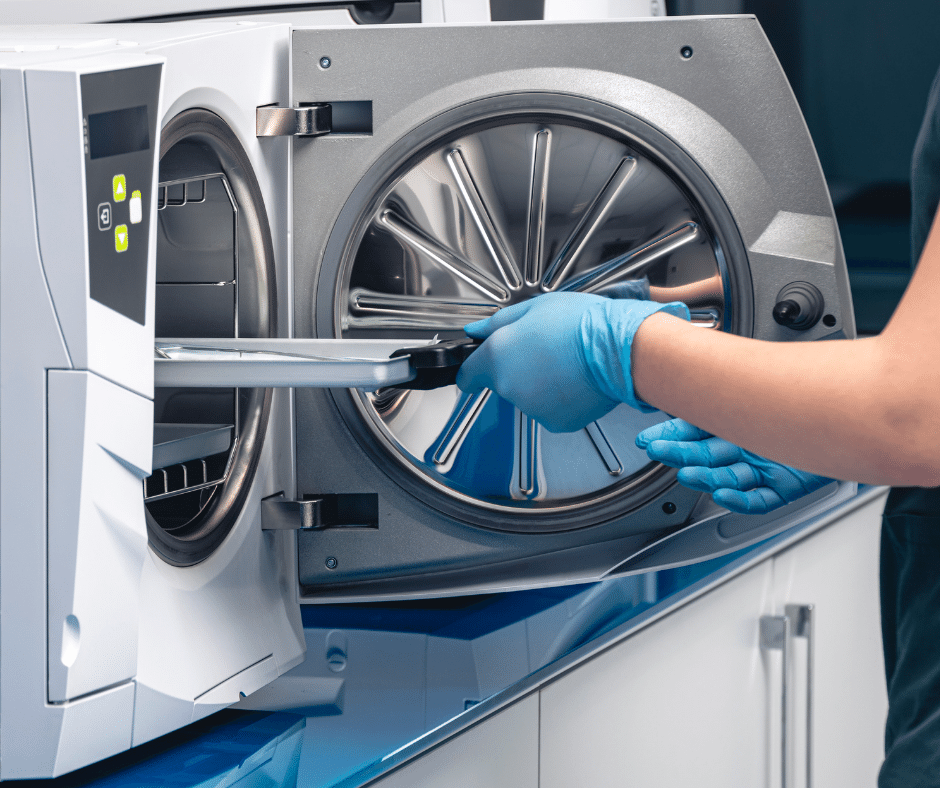In hospitals and medical facilities, ensuring the cleanliness and sterility of medical instruments and equipment is essential to patient safety and infection control. By applying the method known as sterilization, equipment is rid of all forms of microbial life, including bacteria, viruses, fungi, and spores. In this article, we will focus on the characteristics and applications of sterilizers, as well as delve on their Mexican regulatory classification and grouping standards.
Types of Sterilizers
Sterilization methods have evolved to include a wide array of techniques and instruments, like radiation, chlorine gas, ozone, and peracetic acid immersion. Of the diverse methods available, three stand out for its versatility and continued use throughout the evolution of sterilization techniques: steam, ethylene oxide and plasma sterilizers.
Steam Sterilizer
Steam sterilizers, also known as autoclaves, are one of the most widely used and reliable sterilizers in healthcare settings. They rely on high-pressure steam to achieve sterilization. The basic sterilization cycle performed with this device is as follows:
- Steam Generation: Water is heated to produce steam under high pressure.
- Exposure: The steam is circulated around the items, effectively killing microorganisms through heat and moisture.
- Pressure Release: After sterilization, the pressure is released gradually to prevent damage to the items.
- Drying: Some autoclaves include a drying phase to remove excess moisture from the sterilized items.
Steam sterilization is effective against a wide range of microorganisms and is commonly used for instruments such as surgical instruments, laboratory equipment, and reusable medical supplies.
Ethylene Oxide Sterilizers
Ethylene oxide (EO) sterilizers are a gas-based device that is suitable for heat-sensitive and moisture-sensitive items. They work by exposing items to ethylene oxide gas in a controlled environment. It typically works as follows:
- Gas Exposure: Ethylene oxide gas is introduced into the chamber, where it penetrates packaging materials and reaches all surfaces of the items.
- Humidity Control: The process may include controlling humidity levels to enhance the effectiveness of ethylene oxide gas.
- Sterilization Cycle: The items are exposed to the gas for a specific duration at a regulated temperature and humidity.
- Aeration: After sterilization, the chamber is aerated to remove residual gas and make the items safe for handling.
Ethylene oxide sterilization is particularly useful for items that cannot withstand high temperatures or moisture, such as certain plastics, electronic components, and delicate instruments.
Plasma Sterilizers
Plasma sterilizers use a low-temperature sterilization method through the combination of hydrogen peroxide gas and plasma to achieve sterilization. This process is particularly suitable for heat-sensitive medical devices and equipment that cannot withstand high temperatures. The typical process for the plasma sterilization cycle is:
- Preparation: The items to be sterilized are placed in a specially designed chamber.
- Vacuum: The chamber is evacuated to create a vacuum.
- Gas Injection: Hydrogen peroxide gas is injected into the chamber.
- Plasma Generation: Radiofrequency energy is used to generate plasma from the hydrogen peroxide gas.
- Sterilization: The plasma effectively sterilizes the items by destroying microbial contaminants.
- Aeration: After sterilization, the chamber is aerated to remove residual gas and ensure the items are safe for use.
Plasma sterilization is known for its ability to penetrate complex shapes and narrow channels, making it ideal for intricate medical instruments like endoscopes and surgical tools.
Guidelines for Classification and Grouping of Hospital Sterilizers
Hospital Sterilizers of the types mentioned in the previous section fall under Class II medical devices under the Mexican regulatory framework.
In our Classification and Grouping Ultimate Guide, we detail the essential prerequisites for combining various devices into a sole registration. For the sterilizers, the following criteria are applicable:
- Same intended use
- Same distinctive denomination (commercial name)
- Same manufacturer
- Same device technology (i.e., autoclaves and plasma sterilizers need separate registrations)
- Different models of the same brand of device, that vary in loading capacity, can be included in the same registration
If you have any inquiries about the registration of hospital sterilizers, or any other medical devices in the Mexican market, please feel free to contact us at contact@veraqueconsulting.com, or check our guidelines and checklists.

